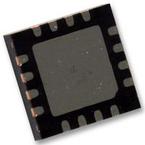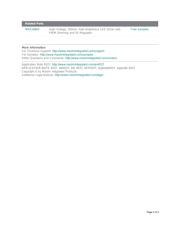herunterladen

Maxim > Design Support > Technical Documents > Application Notes > Display Drivers > APP 4537
Maxim > Design Support > Technical Documents > Application Notes > LED Lighting > APP 4537
Keywords: white LEDs, LED drivers, matched transistor pair, high-side current sensing
APPLICATION NOTE 4537
Level Shifter Helps to Parallel LED Current Drivers
By: Jim Christensen, Strategic Applications Engineer
Dec 08, 2010
Abstract: Using a pair of matched transistors to translate a high-side current-sense signal down to a
ground reference, this circuit lets you parallel LED-driver circuits as required to achieve the desired drive
current.
A similar version of this article appeared in the February 19, 2008 issue of Machine Design magazine.
As white LEDs become more pervasive, the industry provides more options for driving them. Linear
constant-current drivers, for instance, offer low EMI, low cost, and require only a few components. Many
designers favor them for the lower-current applications in which power loss is a minor concern. If power
dissipation is a problem, or if the application requires more current, you can parallel two or more drivers.
Two drivers in parallel provides twice as much current and splits the power loss into two locations, which
makes it easier to dissipate.
High-side pass elements are preferred, especially in automotive applications, because they allow you to
connect only a single current-limited wire (chassis return) to the load. To configure parallel drivers with
high-side pass elements, however, the current-sense feedback circuitry must also be on the high side,
and it must be able to withstand at least the voltage created by the LED load. Thus, linear drivers pose a
dilemma if they have either low-side current-sense feedback or a requirement for limited common-mode
voltage on the sense inputs.
Suppose we want to drive an LED string with 400mA (Figure 1). Drivers U1 and U2 (MAX16803) are
good for automotive use because they have a high input-voltage range, excellent thermal characteristics,
and the automotive temperature range. Their maximum output current, however, is 350mA. Also, with
maximum input voltages of 16V, each IC would dissipate 3.6W—far too much for one package to handle.
One solution is to use two drivers, with each handling half of the current and heat. For the drivers to
share current equally, their current-sense resistors must be on the high (anode) side of the LEDs. That
arrangement introduces another problem: forward voltage for the three LEDs in series reaches almost
8V, but the maximum rating for the current-sense (CS) pins is only 6V.
Page 1 of 3





